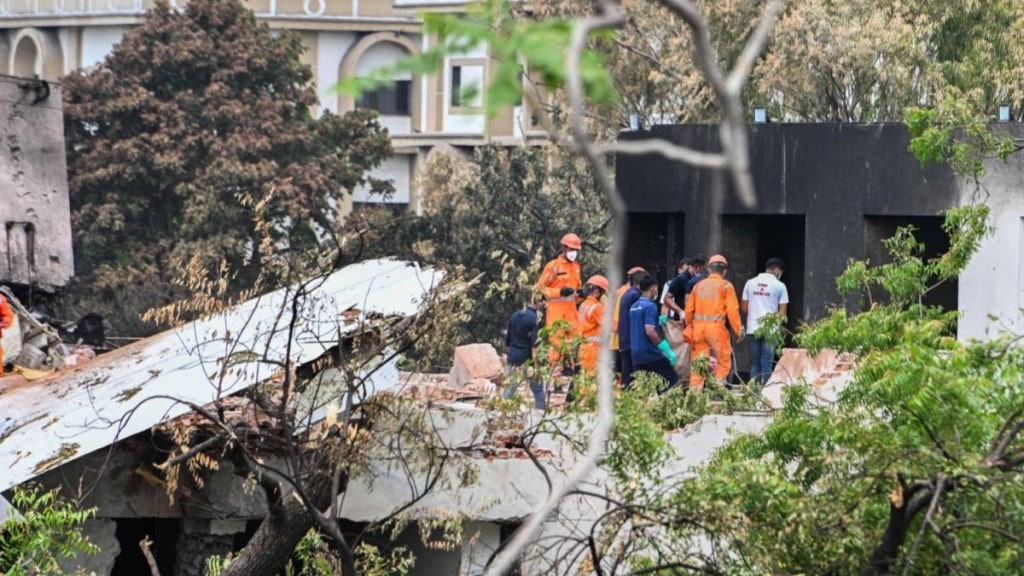The Aircraft Accident Investigation Bureau (AAIB) report has indicated that fuel switch error may have led to engine failure, however now, the latest theory on the crash involves the possibility of malfunctioning of the ‘brain of the aircraft’ that may have led to the un-commanded actions with the fuel switch locks. The Federation of Indian Pilots (FIP) in its recent statement has flagged the possibility of an electronic and mechanical failure that could have led to the deadliest aviation disaster in the last decade.
The possibility indicates that instead of the fuel switch cutting off the supply to engines it could have been the other way round — Did the engine failure trigger an automatic fuel switch movement to cut-off mode?
To understand that further, one needs to know about an inbuilt system in the aircraft called FADEC that monitors crucial controls of an aircraft and based on the data it receives, it can also override pilot commands.
What is FADEC aka ‘brain of airplane’?
Big planes, like the crashed Boeing 787, have a Full Authority Digital Engine Control (FADEC) system. In simple terms, these are the computers that act as the brain of an aircraft. The FADEC monitors sensors and based on the inputs received through other systems, it can adjust things like fuel flow and engine speed automatically; sometimes even bypassing the pilot controls. FADEC works closely with the Electronic Engine Controller (EEC) and the Thrust Control Malfunction Accommodation (TCMA) systems.
The FIP has flagged the possibility that the FADEC system may have been misled by faulty sensor data, causing it to shut down both engines without any input from the crew.
That’s why the pilots’ body has called for a reassessment of the role of TCMA/EEC/FADEC malfunctions in the incident, urging investigators to carefully review data from the Flight Data Recorder (FDR), Cockpit Voice Recorder (CVR) and historical service bulletins issued by Boeing. FIP also pointed to similar past incidents, including a 2019 case involving an All Nippon Airways (ANA) 787, where the FADEC system triggered a dual engine shutdown due to faulty sensor input.
Did faulty TCMA data to FADEC led to crash?
Aviation attorney with a US aviation litigation firm, Mary Schiavo in a conversation with FinancialExpress.com earlier this week said that issues with Thrust Control Malfunction Accommodation (TCMA) may have resulted in the deadly crash. The TCMA tells the FADEC whether it is on the ground or in the air.
Schiavo told FE that her suspicion is based on two previous incidents, one of which involved a Boeing 787. “In early 2025, a United Airlines flight from Nigeria to Washington, DC experienced uncommanded dives. The USA NTSB is still investigating, but we know there was a computer or software problem on that 787,” she said. The aviation attorney also cited the 2019 ANA flight incident as one of the reasons.
Are investigators looking into the FADEC fault angle?
The queries of FIP corroborates with the recent report by Indian Express that says that the investigators probing the June 12 crash are closely studying snags that cropped up in the electrical and software components of the aircraft which could possibly have triggered “un-commanded” actions.
An official in the know told IE that “the probe will ascertain the possibility of an ‘un-commanded transition’ of the fuel control switches to the cut-off mode seconds after the lift-off”.
Just hours before the crash, a stabiliser sensor issue was logged by the pilot flying the same aircraft earlier that day from Delhi to Ahmedabad. The official further told IE that the problem involved the Stabilizer Position Transducer, which controls the aircraft’s pitch by transmitting electrical signals to the flight control system. Though the fault was troubleshot as per Boeing procedure, officials now believe it could be linked to a chain of sensor malfunctions.
The official told IE, “The malfunction is a critical issue as it can trigger incorrect responses in flight control, including unintended fuel cut-off signal,” adding, “The Stabilizer Position Transducer malfunction did not cause this crash, but the question is whether it led to multiple sensor failure.”

